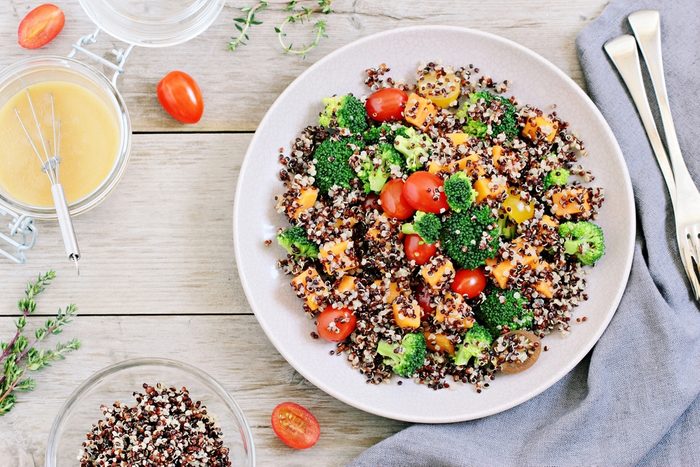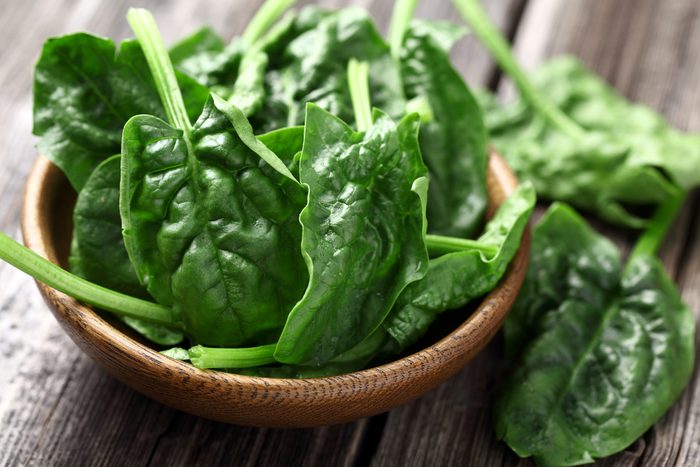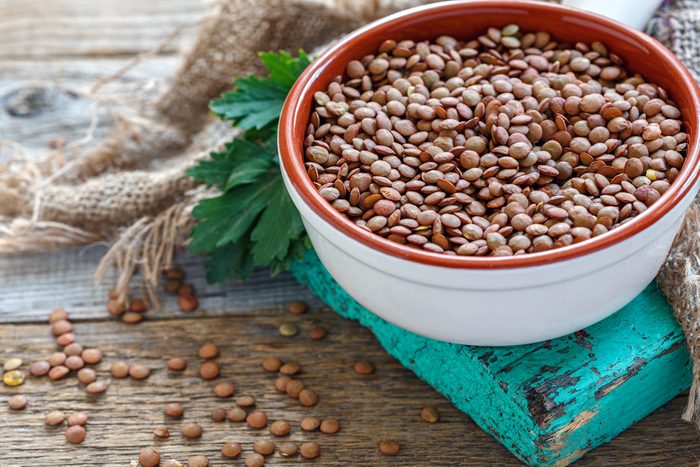
1. Iron
One of the blood tests I order in almost every female patient who requires blood work is a ferritin screening test; this test reflects a person’s iron stores and picks up even subtly decreased levels. You don’t have to be overtly anemic to be low in iron (monthly blood loss and not eating enough iron-rich foods can be key contributors); many women feel vaguely tired and foggy-brained, and aren’t aware that their iron stores are low. Low ferritin levels are also tied to hair loss. For optimal hair health, specialists recommend that women use iron supplements to get their levels up to at least 40 mcg/L. Too much iron can be toxic, though, so don’t take supplements without having blood tests first.
Food sources of iron: Clams, chicken liver, mussels, shrimp, beef, quinoa

2. Magnesium
Do you crave chocolate? Some experts believe your body could actually be begging you for magnesium, which is found in cocoa and other foods. This mineral has many functions in the body: It helps nerves, muscles and the heart to function properly; supports the immune system; and strengthens bones. According to a study published in the 2009 Journal of the American College of Nutrition, the average magnesium intake of women in North America is 68 percent of the recommended level. Magnesium deficiency has been linked to osteoporosis, and taking a magnesium supplement of no more than 350 mg at night may even improve the quality of your sleep. A blood test can be done to measure your level.
Food sources of magnesium: Spinach, cocoa, potatoes, dried beans and lentils, fish, whole grains

3. Folate
Most women know extra folate is needed during pregnancy (or if you are trying to conceive) to prevent birth defects, but low folate can also affect your mood. It helps synthesize feel-good serotonin in your brain, and studies have shown that people with low folate are more prone to depression. Supplementation is recommended for all women of child-bearing age. That’s especially true for those who are taking the birth control pill, since it can lower folate levels. The recommended dose is 400 mcg/day.
Food sources of folate: Lentils; romano, black, pinto and kidney beans; chickpeas; cooked asparagus and spinach

4. Vitamin D
Vitamin D supplementation is critical for those living in the world’s northern climates, such as Canada’s. That’s because we have less sunlight during the year, and the sun’s rays aren’t as strong as in countries farther south. The current Health Canada dietary recommended intake (DRI) for vitamin D is 600 IU daily for children and adults from nine to 70 years old, with the upper intake at 4,000 IU. That said, I have heard much higher intakes recommended by experts at medical conferences, as suboptimal D levels are now being linked to everything from breast cancer to heart disease. You can get your blood level of vitamin D tested, and ask your doctor for their opinion. I take, and usually recommend, 2,000 IU daily.
Food sources of vitamin D: Fortified milk, soy beverages, fatty fish such as sockeye salmon, egg yolks. But it is often hard to reach the optimal level of this vitamin through food alone, so it’s a good idea to always take supplements.
